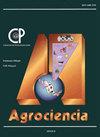PHYSICOCHEMICAL CHARACTERISTICS OF RED WINES (CABERNET SAUVIGNON AND TEMPRANILLO) FROM ENSENADA, BAJA CALIFORNIA
IF 0.5
4区 农林科学
Q4 AGRICULTURE, MULTIDISCIPLINARY
引用次数: 0
Abstract
Ensenada wine country, in the State of Baja California, Mexico, accounts for approximately 70–80 % of Mexico’s wine production. Despite its significance, detailed knowledge of the physical and chemical properties of wines remains limited. In this study, we examined nine physicochemical properties of 69 commercial red wines produced from the Tempranillo and Cabernet Sauvignon varietals in the San Vicente, Santo Tomás, and Guadalupe valleys. The pH, total acidity, acetic acid, lactic acid, malic acid, total polyphenols, glucose/fructose ratio, alcohol content, and red color intensity were all analyzed. Tempranillo wines showed significantly higher levels of acetic acid, lactic acid, and total acidity, but lower levels of total polyphenols and malic acid than Cabernet Sauvignon wines. Furthermore, wines from the Santo Tomás region have significantly higher alcohol content, glucose/fructose ratio, total polyphenols, red color intensity, and total acidity, distinguishing them from the wines of San Vicente and Guadalupe. Our results highlight the influence of the grape variety on wine chemistry, emphasizing the possibility for further optimization of the winemaking processes for the benefit of vine growers, enologists, and wine production in the region.下加利福尼亚州埃森纳达红葡萄酒(赤霞珠和添普兰尼洛)的理化特性
墨西哥下加利福尼亚州的恩塞纳达葡萄酒产区约占墨西哥葡萄酒产量的 70-80%。尽管其重要性不言而喻,但对葡萄酒物理和化学特性的详细了解仍然有限。在这项研究中,我们检测了圣维森特谷、圣托马斯谷和瓜达卢佩谷出产的 69 种丹魄和赤霞珠商用红葡萄酒的九种物理化学特性。对葡萄酒的 pH 值、总酸度、乙酸、乳酸、苹果酸、总多酚、葡萄糖/果糖比、酒精含量和红色强度进行了分析。与赤霞珠(Cabernet Sauvignon)葡萄酒相比,添普兰尼洛(Tempranillo)葡萄酒的醋酸、乳酸和总酸度水平明显较高,但总多酚和苹果酸水平较低。此外,圣托马斯地区的葡萄酒在酒精含量、葡萄糖/果糖比、总多酚、红色强度和总酸度方面都明显高于圣维森特和瓜达卢佩地区的葡萄酒。我们的研究结果凸显了葡萄品种对葡萄酒化学成分的影响,强调了进一步优化酿酒工艺的可能性,以造福该地区的葡萄种植者、酿酒师和葡萄酒生产。
本文章由计算机程序翻译,如有差异,请以英文原文为准。
求助全文
约1分钟内获得全文
求助全文
来源期刊

Agrociencia
农林科学-农业综合
CiteScore
0.50
自引率
33.30%
发文量
51
审稿时长
18-36 weeks
期刊介绍:
AGROCIENCIA is a scientific journal created and sponsored by the Colegio de Postgraduados. Its main objective is the publication and diffusion of agricultural, animal and forestry sciences research results from mexican and foreign scientists. All contributions are peer reviewed. Starting in the year 2000, AGROCIENCIA became a bimonthly and fully bilingual journal (Spanish and English versions in the same issue). Since 2007 appears every month and a half (eight issues per year). In addition to the printed issues, the full content is available in electronic format.
 求助内容:
求助内容: 应助结果提醒方式:
应助结果提醒方式:


